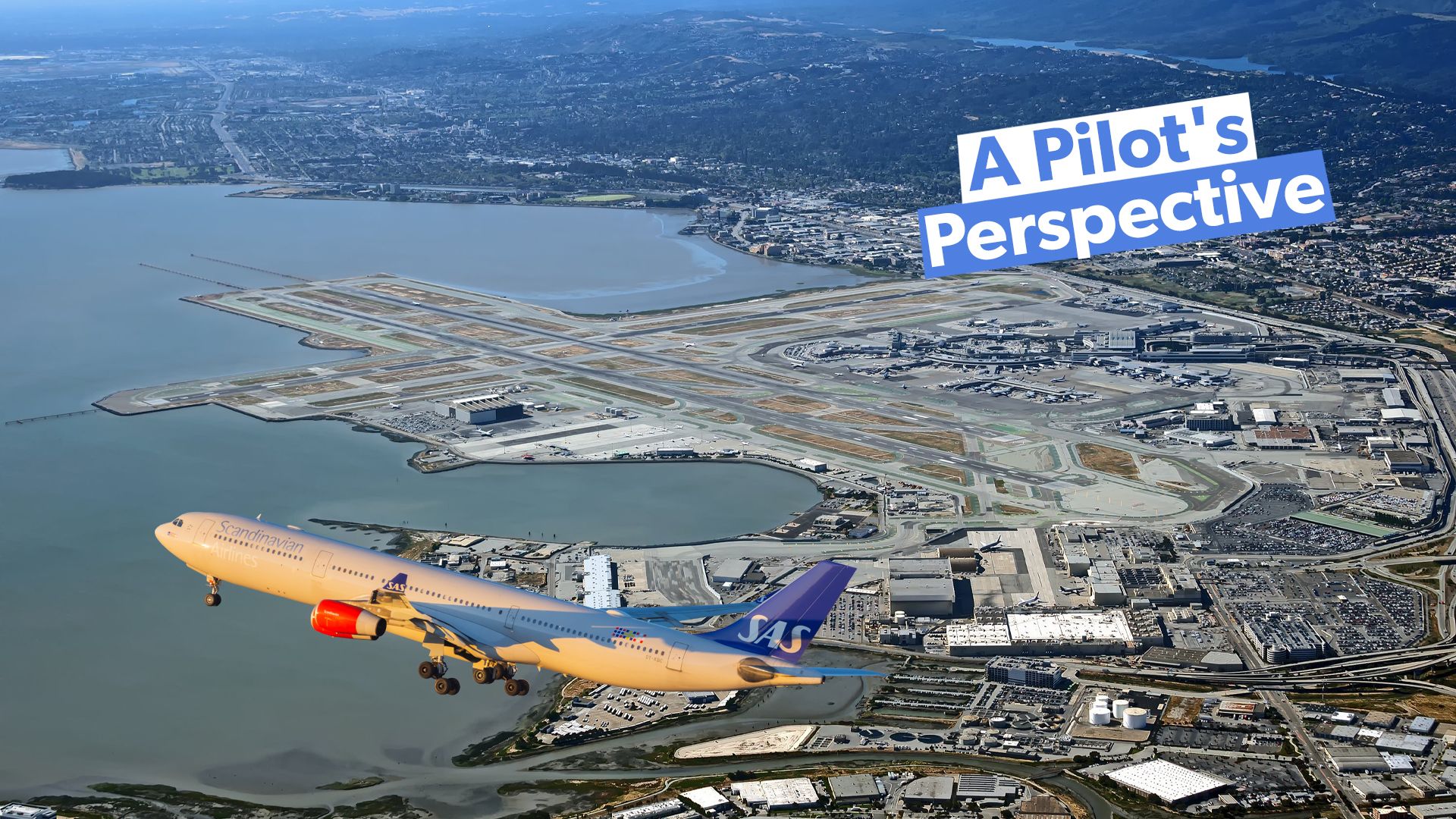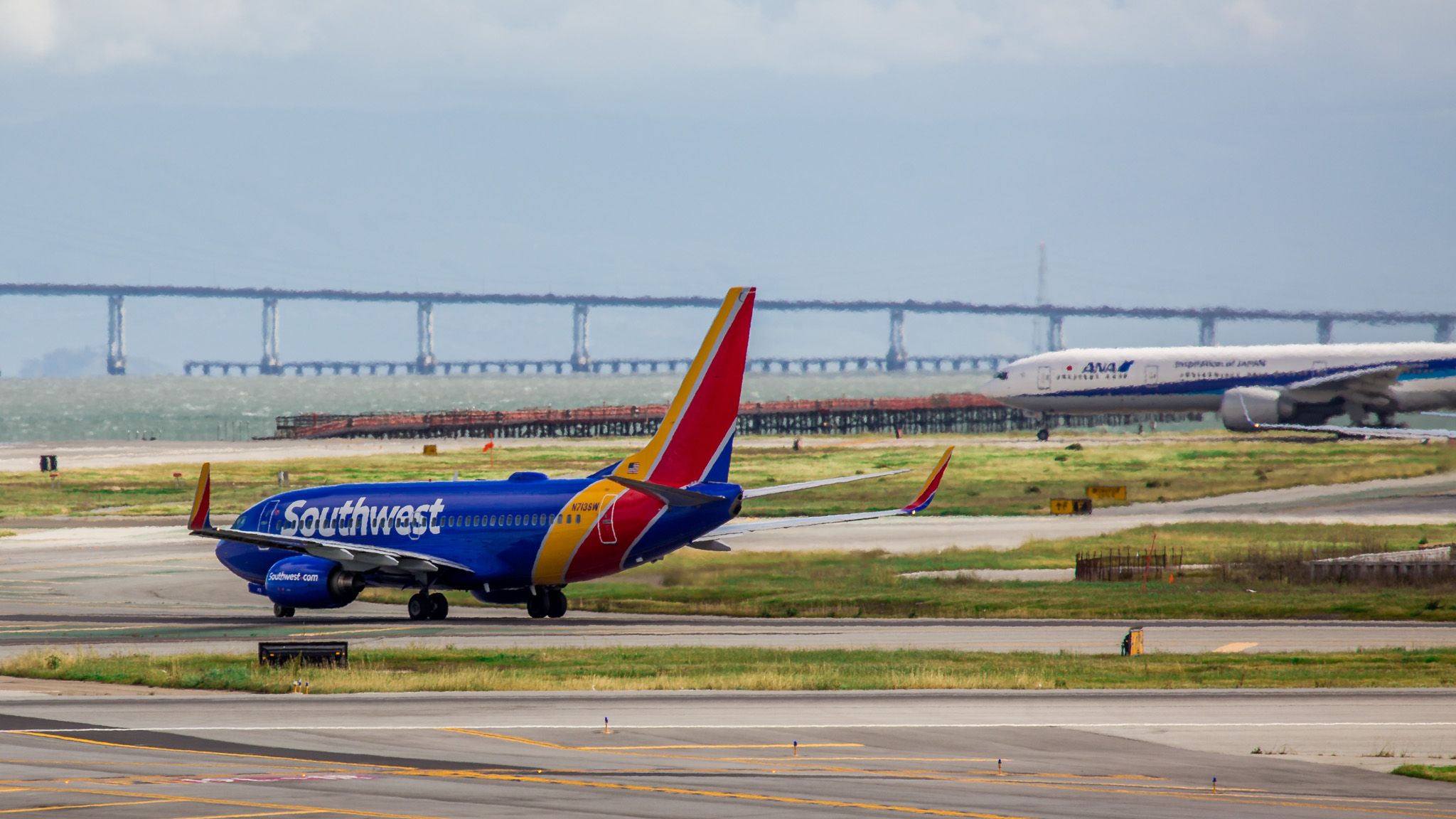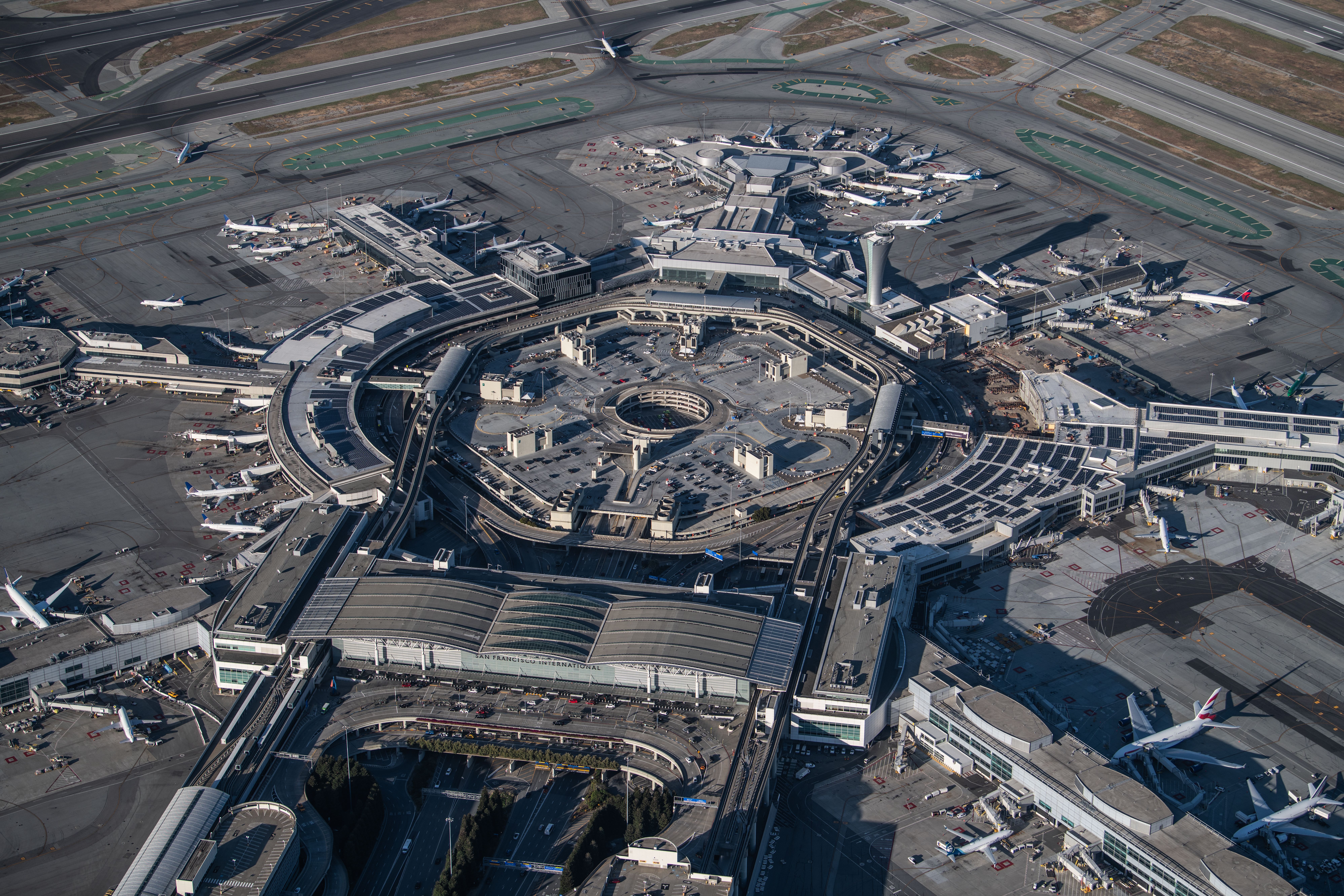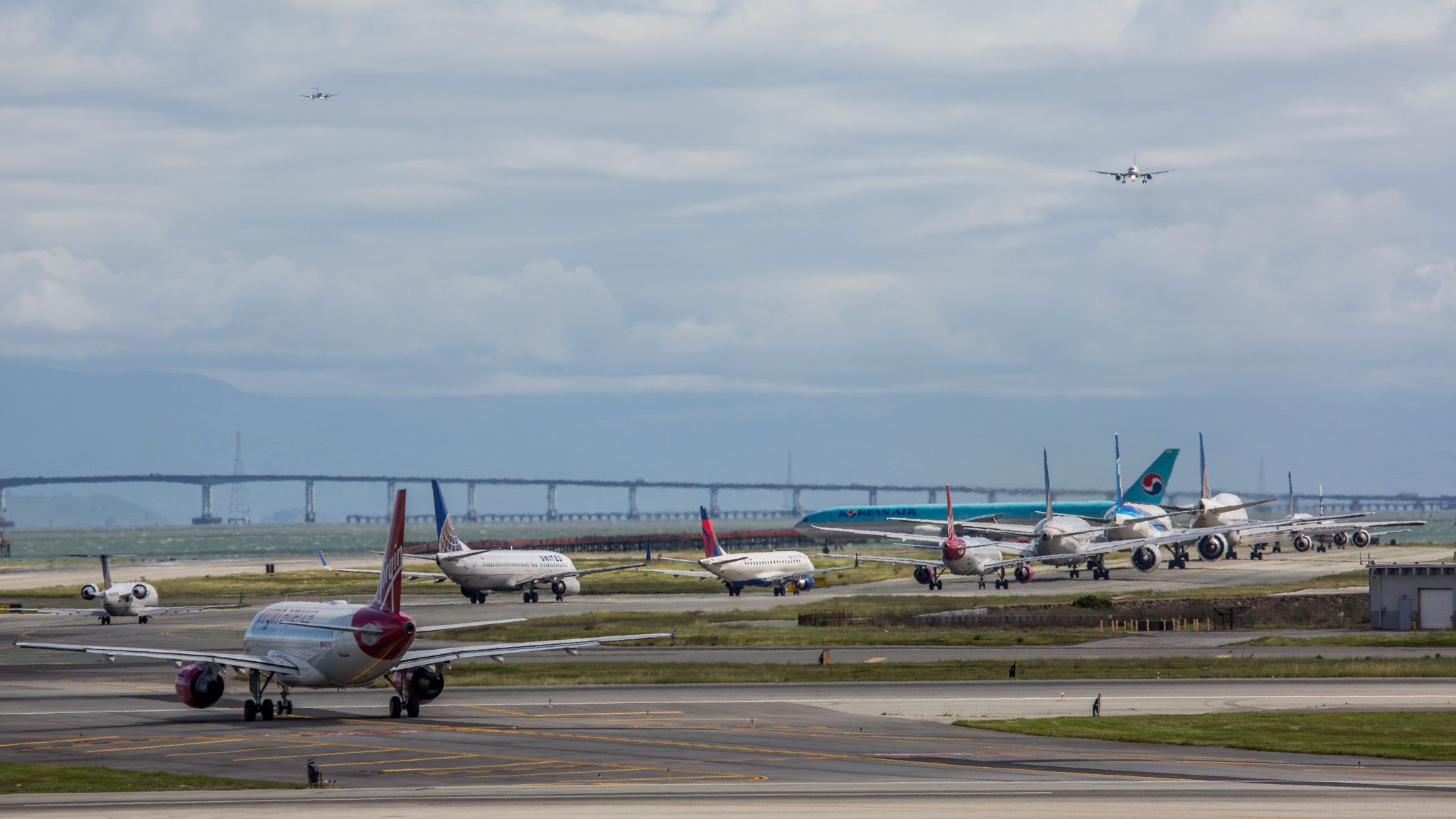As Northern California’s most prominent and busiest airport, San Francisco International Airport
(SFO) is a gateway from the Bay Area to the world. The airport is one of the few worldwide with two sets of parallel intersecting runways and boasts wonderful terminal and ramp views. Few other airports offer consistently visible parallel approaches and departures all day long. San Francisco is also one of the largest international gateways in the United States.
A testament to this is Lufthansa’s decision to choose SFO as one of the debut destinations for its new Allegris cabin product. Accordingly, SFO deserves an article that addresses the airport from a pilot’s perspective. Here are some insights and tidbits into the operational experience at San Francisco International.
Parallel runway operations
One of the biggest differences between SFO and other large airports is the volume of simultaneous close parallel traffic that operates into and out of the airport. Furthermore, it seems like SFO handles more crossing traffic than other airports because of its cross-shaped mid-field runway intersection points. San Francisco can, at times, seem like a fast-paced symphony of parallel landings and departures because of how well controllers take advantage of the minimum allowable space and time between operations.
The normal and preferred traffic flow at SFO uses runways 1L/R for “light” departures, while runways 28L/R are used for semi-staggered parallel landings. Runway 28L is used for performance-limited departures, especially during the afternoon and evening international departure window when more widebody planes need the added runway length to takeoff.
The distance between runway centerlines at SFO is a mere 750 feet. The FAA standard for simultaneous parallel operations is much larger than this, but SFO has an exception that allows for staggered parallel arrivals and simultaneous departures. ATC will line up two planes on runways 1L/R while traffic lands on the crossing runways downfield. The aircraft on 1L is flying SEGUL 1 or SSTIL 5 RNAV departure, which requires a left turn at 520 feet.
The plane on 1R will be flying the TRUKN 2 departure, which features a right turn at 520. If given back-to-back takeoff clearances, the two departures climb together for the first few seconds before making their diverging turns at 520′. It’s a pretty cool sight on the ground or in one of the planes.
Photo: Jeppessen
Airlines have operational notes for pilots regarding the proximity of the runways at SFO. Specifically, some airlines require that pilots operate their transponders in a slightly altered mode. Visual (VMC) days allow controllers to space planes closer together than on days with Instrument Meteorological Conditions (IMC). When visual approaches to both runways 28L/R are in use, pilots switch their transponders to a mode that only alerts them to a “TA,” or traffic advisory.
This prevents the transponder from issuing an “RA,” or resolution advisory, which regularly happens due to the proximity of planes approaching runways 28L/R at SFO. If pilots didn’t do this, the TCAS system might issue a “breakout” instruction to pilots maintaining visual separation with the parallel traffic. Despite this, TCAS RA’s are still relatively common at SFO. The result is a go-around followed by another approach.
Wine & surf country
An interesting wrinkle unique to SFO’s procedures is the inclusion of wine varietal and cultural references. San Francisco is about 50 miles south of some of the most acclaimed wine regions in the US, such as Napa, Santa Rosa, and Sonoma. In deference to this, a few arrivals and departures have waypoint names that reflect the region. For example, the BDEGA 4 and STLER 4 arrivals have waypoints named:
- MLBEC (read aloud as Malbec)
- MRRLO (Merlot)
- CBRNA (Cabernet)
- MSCAT (Moscat[o]
The procedures have other wine references, such as LEGSS and CORKK.
Photo: San Francisco Int’l Airport
In addition to the wine references, other procedures feature surf references in homage to the multiple surf breaks around the San Francisco area. Pilots arriving at SFO from Southern Californian flight corridors are often given clearance to descend via the SERFR 4 or WWAVS 2 arrivals. The waypoint names on these procedures include:
- WWAVS
- STOKD
- NRRLI
- EPICK
- WPOUT.
On another (musical) note, a few more procedures have waypoint names that pay tribute to San Francisco musicians. The SNTNA 2 departure is named after guitarist Carlos Santana, who grew up and formed his band in San Francisco. The departure also has the waypoints GRTFUL and DEDHD in recognition of the band The Grateful Dead, which formed in Palo Alto, just a few miles south of SFO.
Taxiing
Taxi times in San Francisco vary widely depending on the time of day and which runway a flight will depart from. Arrivals tend to have short taxi times. After clearing the runways, SFO has a semi-circular taxiway design around its terminal structure, which allows planes to move simultaneously clockwise and counterclockwise. The only restriction on taxi-in times is if the alleyway is blocked by an aircraft that has just been pushed back.
Photo: San Francisco Int’l Airport, Ryan Patterson
In comparison, taxi-out times can be lengthy if a flight has to taxi from the northwest side of the terminal area to runway 28L/R. This requires crossing 1L/R and queuing in line behind primarily heavy departures, which requires more spacing. Additionally, flights departing 28L/R have to wait for 1R/L departures while also requiring spacing between arrivals to 28L/R.
It’s common to spend more than 20 minutes on taxiway Foxtrot short of 28L waiting for an opportunity to depart. Approach controllers have the difficult task of spacing arrivals to allow for 28L/R departures between landings. This, combined with parallel takeoffs from the northern runways, makes controlling SFO a unique challenge.
Photo: San Francisco Int’l Airport
Parallel squared
The most distinguishing feature at SFO is the daily use of two sets of parallel runways. Only a few other large airports in the US, such as Boston, Detroit, and Chicago Midway, have sets of parallel runways intersecting other sets of parallel runways. San Francisco is alone in its dependence on all four runways for daily, standard operations. This makes controlling at SFO a unique challenge and avails countless planespotting opportunities that feature close parallel operations. The cherry on top is the beautiful view of the San Francisco Bay and adjacent mountains in the background.





